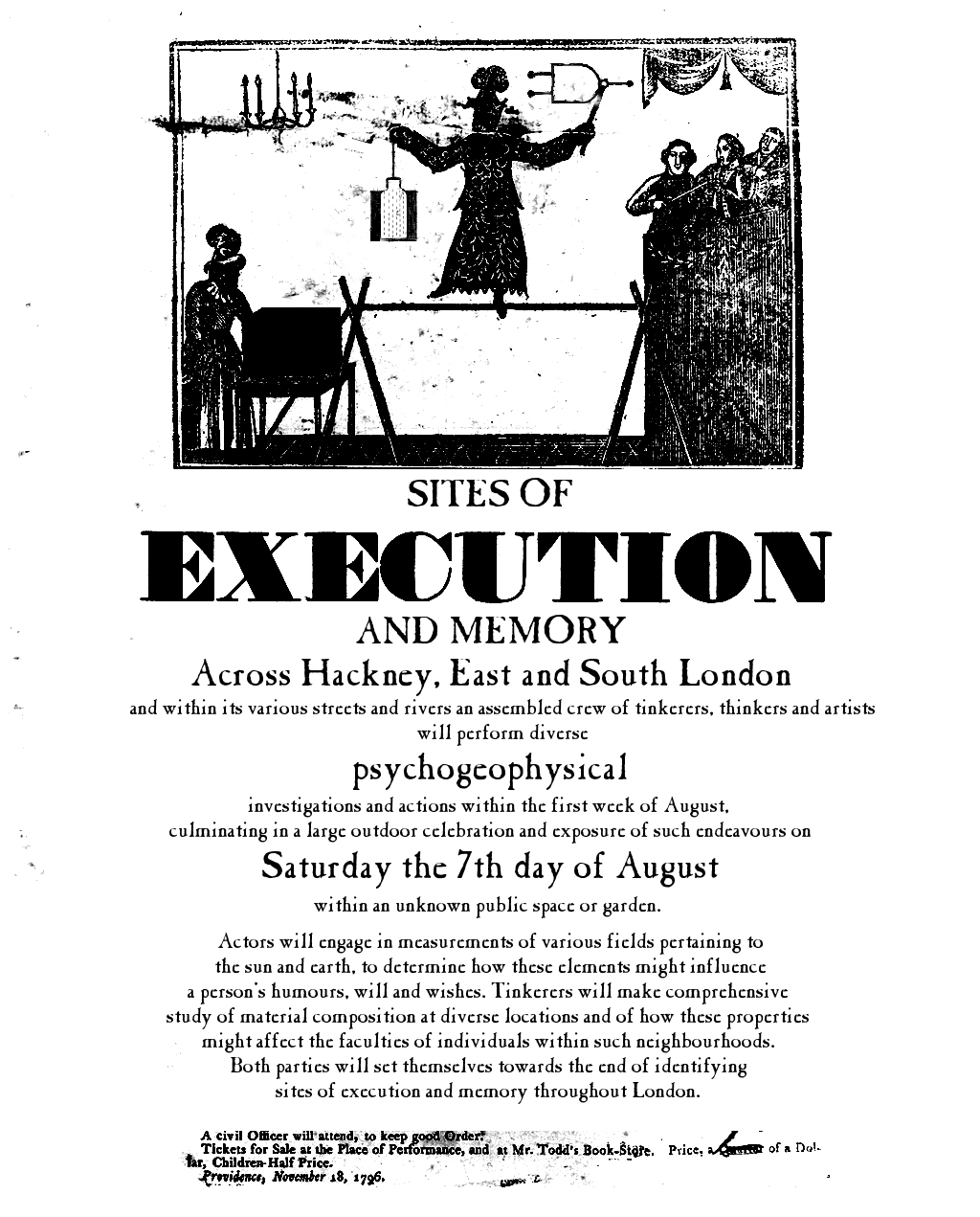The Psychogeophysicks Reader (2010, draft)
Filed under book | Tags: · electromagnetism, magick, psychogeography, psychogeophysics

Contents:
1. TELLURO-MAGNETIC CONSPIRACY TOWARDS THE SUN I & II extracts from Cyclonopedia: Complicity with Anonymous Materials by Reza Negarestani, 2008.
2. The HIEROGLYPHIC MONAD by John Dee, 1564.
3. The “PW” CRYSTAL EXPERIMENTER’S HANDBOOK, from Popular Wireless, 1925.
4. The Philosophers of Nature (Jean Dubuis): Lessons 9 & 16, ON MINERAL ALCHEMY. 1986.
5. The EPISTLE OF JOHN PONTANUS, 1600.
6. JERUSALEM by William Blake, 1820
7. ON THE POSSIBILITY OF DIRECTLY ACCESSING EVERY HUMAN BRAIN BY ELECTROMAGNETIC INDUCTION OF FUNDAMENTAL ALGORITHMS by Michael Persinger, 1995.
By anonymous
30 July 2010
PDF (draft, July 2010)
PDF (version 0.4, August 2011; added 2012-2-7)
The Psychogeophysics Handbook (2010, draft)
Filed under book | Tags: · code, electromagnetism, media ecology, psychogeography, psychogeophysics, situationists, software, software studies, spectral ecology, technology

With psychogeography easily de ned as a playful examination of the total effects of geography and place on the individual, [“the study of the precise laws and specifi c effects of the geographical environment, consciously organized or not, on the emotions and behavior of individuals.” Guy Debord. Introduction to a Critique of Urban Geography, 1955]. Psychogeophysics extends such research to embrace geophysics, defined as the quantitative observation of the earth’s physical properties, and its interaction with local spectral ecologies. Geophysics equally encompasses archaeological geophysics, with measurement of such properties allowing for the mapping of previous traces through techniques of particle/wave detection and data forensics.
This extension of psychogeography into geophysics implies a collision between interpretation (fi ction) and measurement, with Psychogeophysics proposed as a novel discipline that bridges any such distinction through the medium of code, and offers a speculative take on the future of code as an uncovering of its locative (diagnostic) potentials leading to a new phase of software studies.
By anonymous
20 July 2010
authors
article about psychogeophysics (Anthony Iles, Mute)
Parrhesia: A Journal of Critical Philosophy, No. 9 (2010)
Filed under journal | Tags: · philosophy, philosophy of technology, politics, time

Established in 2006, Parrhesia is dedicated to publishing the latest work on continental philosophy, along with new translations and interviews with contemporary thinkers. The essays are double blind peer-reviewed.
Journal is affiliated with the Schools of Philosophy and English at the University of Melbourne, and the Melbourne School of Continental Philosophy.
Editorial board: Alex Murray, Arne De Boever, Jon Roffe, Ashley Woodward
Part of Open Humanities Press
ISSN: 1834-3287.
Published under the Creative Commons Attribution-Noncommercial-No Derivative Works 3.0 License.
PDF
Download the previous issues (PDF essays)

